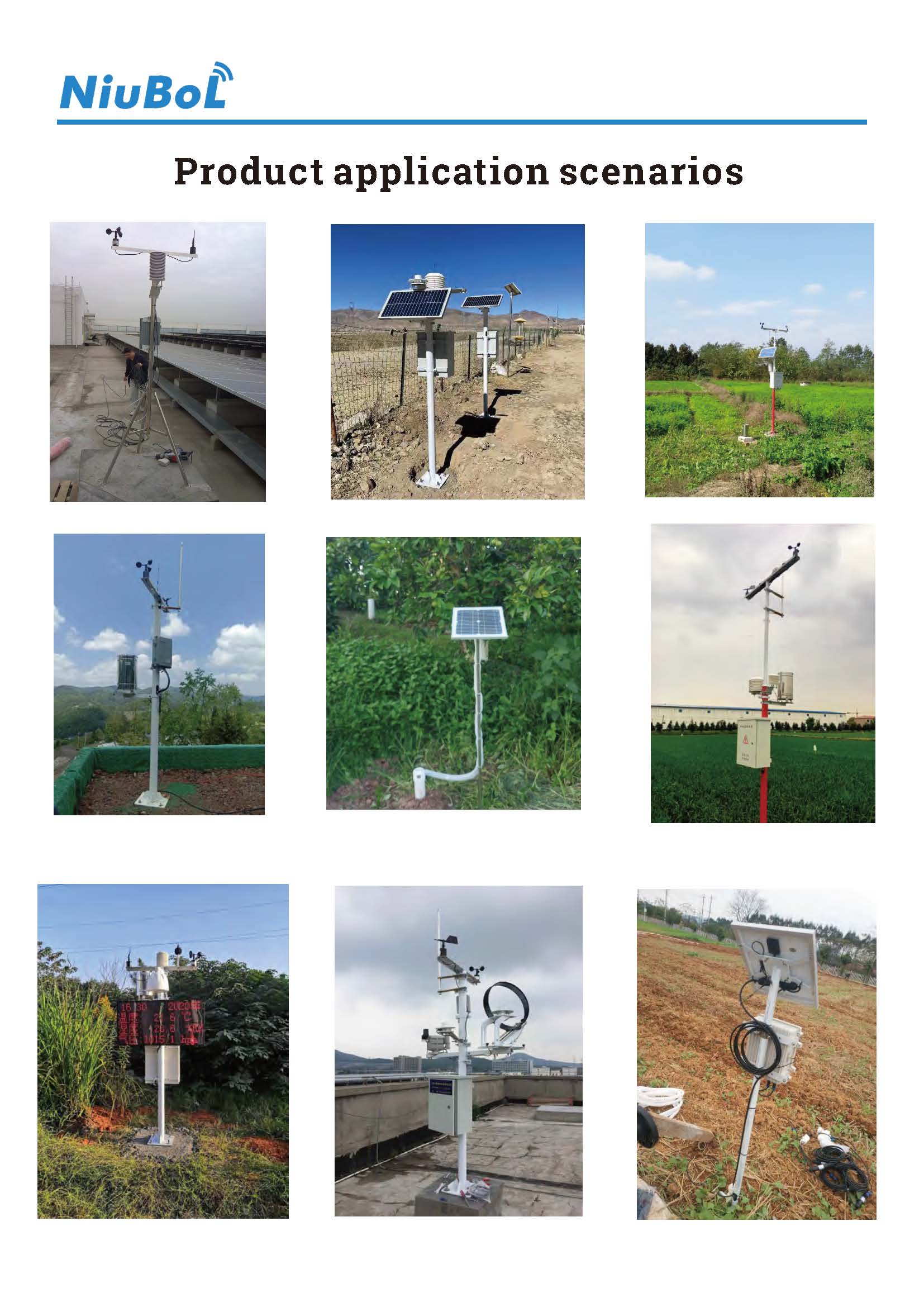

— Blogs —
—Products—
 Consumer hotline +8618073152920
Consumer hotline +8618073152920 WhatsApp:+8615367865107
Address:Room 102, District D, Houhu Industrial Park, Yuelu District, Changsha City, Hunan Province, China
Product knowledge
Time:2024-09-06 10:54:16 Popularity:992
In modern agriculture and environmental monitoring, small weather stations are widely popular for their portability, flexibility and cost-effectiveness. They can provide accurate weather data to help farmers, researchers and environmentalists better understand weather changes and thus make more informed decisions. However, with so many products on the market, how to choose the right small weather station has become the center of attention for many users. This article will provide you with a detailed analysis of the selection of small weather stations to help you make informed decisions.
- Brand research: it is crucial to choose a brand with good reputation and rich experience. Brand is an important factor that cannot be ignored. Well-known brands often represent higher product quality, better service system and richer industry experience. Therefore, it is recommended that users conduct sufficient market research before purchase to understand the reputation of different brands, user reviews and product performance characteristics, so as to select the most suitable weather station for their needs.
- Quality certification: check whether the product has passed the relevant quality certification, such as ISO certification, CE certification and so on.
- After-sales service: Considering that a small weather station may contain multiple sensors, the complexity of the equipment means that the probability of failure is relatively high. Therefore, it is important to choose a vendor that offers comprehensive after-sales service. Make sure the vendor offers at least a one-year warranty and has a responsive customer service team so that you can get help in a timely manner in case of problems.
- Technical support: Find out whether the vendor provides technical training and ongoing technical support, which is especially important for first-time users of small weather stations.
Users should know in detail the after-sales service policy of the vendor, including the warranty period, maintenance process, technical support methods, etc., so that they can get effective help when needed.
- Bulk purchase: If your team or organization needs more than one small weather station, it is recommended to buy them in one batch. Not only can you enjoy a more favorable price, but also when you encounter problems in the process of using the equipment, you can share your experience with each other and solve the problems together. In addition, devices from the same lot usually perform better in terms of compatibility and data consistency.
In addition, purchasing in a unified batch also helps to unify management and maintenance, and improve the efficiency of use.
- Needs analysis: Before purchasing, identify your specific needs. For example, do you need to monitor specific weather parameters? Does the device need to have wireless transmission capabilities? Understanding these needs will help you narrow down your choices and avoid purchasing a product with too many features.
- Budget planning: Set a reasonable budget, taking into account the long-term operating costs of the equipment, such as maintenance costs, replacement of consumables, and so on. Choose a cost-effective product, not just a low price.
For example, farmland cultivation may be more concerned about soil moisture, light intensity and other parameters; while environmental monitoring may be more concerned about air quality, wind speed and direction and other parameters. Do not blindly follow the trend of purchase, so as not to cause waste of resources and unnecessary economic burden.
When choosing a small weather station, users should also consider the performance and cost of the product. On the one hand, to ensure that the selected weather station to meet their actual needs, with stable and reliable data acquisition and transmission capabilities; on the other hand, we should also consider the cost factors, to avoid excessive pursuit of high performance and ignore the actual budget. By comparing the performance parameters and price information of different brands and models of weather stations, users can find the product with the best cost performance.

Conclusion
Choosing a small weather station is a comprehensive process that involves branding, after-sales service, bulk purchase strategy and balancing actual needs with budget. Through careful research and comparison, you can find the ideal product that meets both your budget and your needs. Remember, investing in a high-quality small weather station will not only provide accurate weather data, but also bring long-term benefits to your work or research.
Hopefully, the guide in this article will help you make an informed decision for your weather data monitoring efforts. At the same time, it also reminds users to pay attention to the maintenance and repair of the weather station equipment in the process of use, to ensure its long-term stable operation and maximize its effectiveness.
Related recommendations
Sensors & Weather Stations Catalog
Agriculture Sensors and Weather Stations Catalog-NiuBoL.pdf
Weather Stations Catalog-NiuBoL.pdf
Related products
 Combined air temperature and relative humidity sensor
Combined air temperature and relative humidity sensor Soil Moisture Temperature sensor for irrigation
Soil Moisture Temperature sensor for irrigation Soil pH sensor RS485 soil Testing instrument soil ph meter for agriculture
Soil pH sensor RS485 soil Testing instrument soil ph meter for agriculture Wind Speed sensor Output Modbus/RS485/Analog/0-5V/4-20mA
Wind Speed sensor Output Modbus/RS485/Analog/0-5V/4-20mA Tipping bucket rain gauge for weather monitoring auto rainfall sensor RS485/Outdoor/stainless steel
Tipping bucket rain gauge for weather monitoring auto rainfall sensor RS485/Outdoor/stainless steel Pyranometer Solar Radiation Sensor 4-20mA/RS485
Pyranometer Solar Radiation Sensor 4-20mA/RS485
Screenshot, WhatsApp to identify the QR code
WhatsApp number:+8615367865107
(Click on WhatsApp to copy and add friends)
